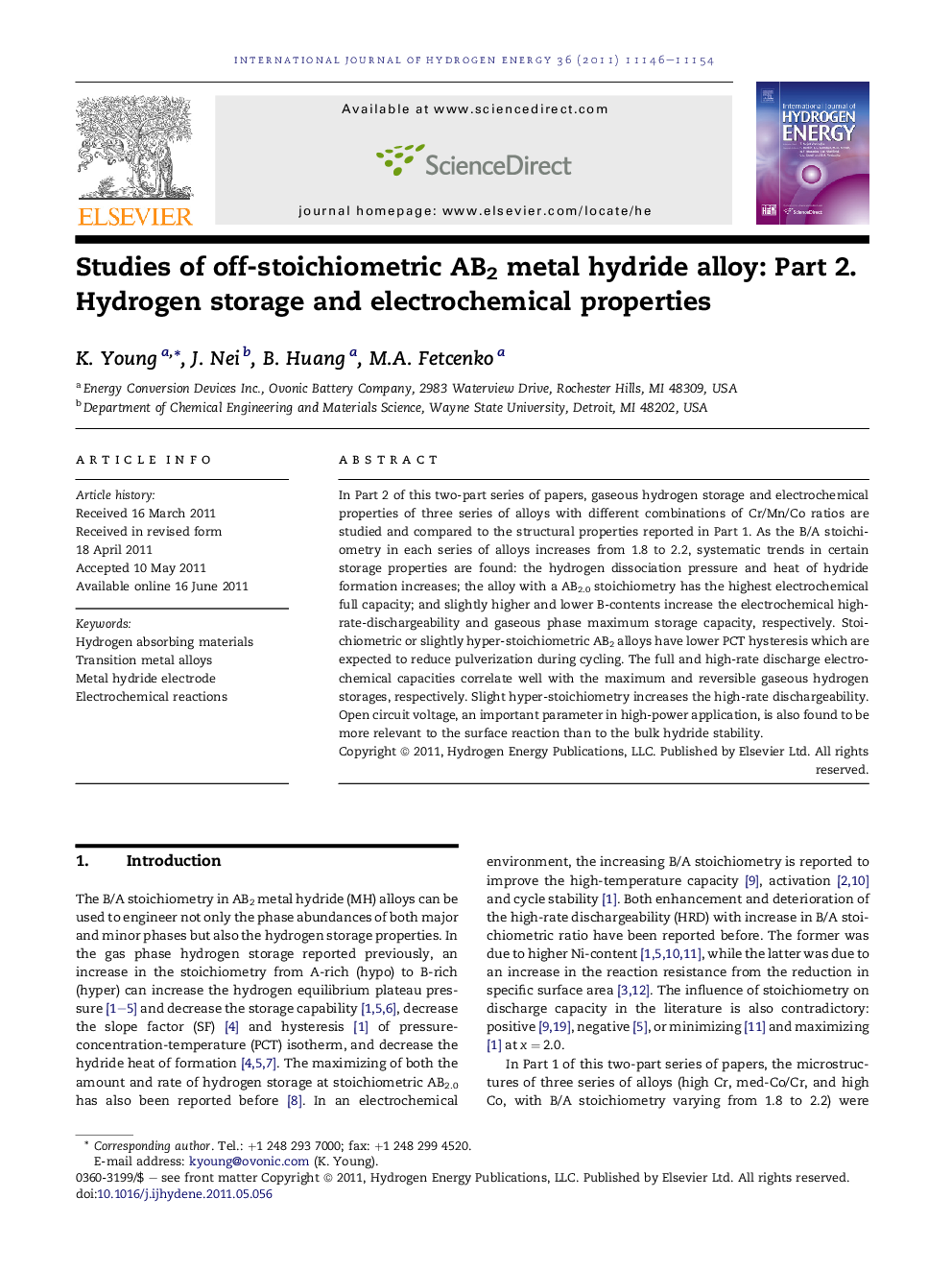| Article ID | Journal | Published Year | Pages | File Type |
|---|---|---|---|---|
| 1277587 | International Journal of Hydrogen Energy | 2011 | 9 Pages |
In Part 2 of this two-part series of papers, gaseous hydrogen storage and electrochemical properties of three series of alloys with different combinations of Cr/Mn/Co ratios are studied and compared to the structural properties reported in Part 1. As the B/A stoichiometry in each series of alloys increases from 1.8 to 2.2, systematic trends in certain storage properties are found: the hydrogen dissociation pressure and heat of hydride formation increases; the alloy with a AB2.0 stoichiometry has the highest electrochemical full capacity; and slightly higher and lower B-contents increase the electrochemical high-rate-dischargeability and gaseous phase maximum storage capacity, respectively. Stoichiometric or slightly hyper-stoichiometric AB2 alloys have lower PCT hysteresis which are expected to reduce pulverization during cycling. The full and high-rate discharge electrochemical capacities correlate well with the maximum and reversible gaseous hydrogen storages, respectively. Slight hyper-stoichiometry increases the high-rate dischargeability. Open circuit voltage, an important parameter in high-power application, is also found to be more relevant to the surface reaction than to the bulk hydride stability.
► As the B/A increases from 1.8 to 2.2, the hydrogen dissociation pressure increases. ► AB2.0 alloy has the highest electrochemical full capacity. ► Slightly higher B-content increases the electrochemical high-rate-dischargeability. ► Slightly lower B-content increases the gaseous phase maximum storage capacity.
